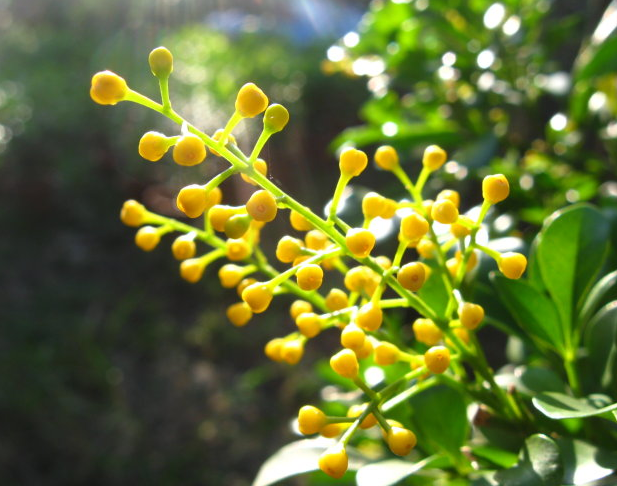Milan flower, (Latin name: Aglaia odorata Lour) alias: Four Seasons Milan, Broken Milan, Meliaceae, Aglaia odorata Lour is an evergreen shrub or small tree; belongs to Nanaceae, Aglaia odorata Lour is an evergreen small tree, adapted to warm In humid climates, adult plants need sufficient sunlight. Its branches and leaves are dense, and the leaves are green and bright. It blooms many times in a year, and it is the most prosperous in summer and autumn. When it blooms, it is fragrant and smells like orchids. There are often small star-shaped rust-colored scales on the top of the branchlets;
Alternate pinnate compound leaves, yellow flowers, very fragrant, about 2 mm in diameter. Hermaphrodite pedicel slightly short and thick, calyx 5-lobed, petals 5, oblong; berry nearly spherical, 10-12mm long, flowering in summer and autumn.
Milan flower often grows in sparse forests or shrubs in low-altitude mountains.
Milan likes to be warm, sunny and fat. The optimum temperature for growth is 20°C~25°C. Under normal circumstances, the sun is sufficient and the temperature is high (about 30°C), and the flowers that bloom have a strong fragrance. If it is placed in a shaded place in summer and a large amount of nitrogen fertilizer is applied at the same time, it will cause no flowering or less flowering and weak fragrance in Milan. Therefore, during the growth and development of Milan, it needs to be maintained in a sunny place outdoors, and attention should be paid to applying more liquid fertilizer with more phosphorus. It is best to use broken bones, fish bones, chicken bones, etc. Alum fertilizer and water, often supplemented with some chemical fertilizers containing more phosphorus or fermented rice washing water, etc., are all helpful for pregnant buds, making them bloom more, golden in color, and fragrant in smell.
Milan flower likes warm, humid and sunny environment, less cold-tolerant, slightly shade-tolerant, and the optimum temperature for growth is 20°C~25°C. Moreover, the soil for cultivating Milan flowers should be loose, fertile and slightly acidic soil, and the temperature in winter should not be lower than 10°C.

